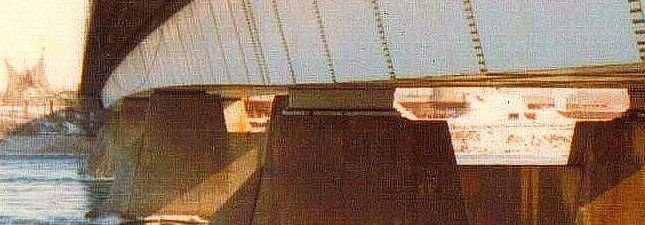 |
| Add captioCopyright 2018 A. Barake |
Being a spectrum that ranges from the personal to the universal, and the laws of statistics being what they are (more on that later), most artists balance with one foot on each side of the fulcrum to make a go at it.
Since I am using a categorization argument, I must also talk of those who create entire new universals, new micro-cultures, new ways of seeing, by extending the culture. Movements are easier in groups, thus marketing attempts that wow the weak-minded critics, but once in a while, a huge, huge ego leave the packs behind, through mono-maniacal focus and dedication. This is a special flavour of self-centredness. This is
what we label as genius.
The cost is to the normal. You cannot be outside the norm and live normally. Looking at examples, like Picasso, Frank Lloyd Wright, Hemingway, we see the huge personal toll on their close ones. Relationships have to come second to the work.
Since we learn by aping others, there will always be minor artists who embrace the self-centredness first and then hope for the universality.
What easier subject to study than the one we are in love with most. The self-portrait is a rite of passage, like the nude. Without a real muse, I can be my own. Even a muse can act as an amplifier to my ego.
There are so many writers, musicians, visual artists, who can do no better than tell us stories about themselves. The ones we hear above the din are the ones who tell us with style, those that rise above the averaging noise, that can be seen through the grass, but the intensity, quirkiness, and interest is no substitute for transcendence.
Define transcendence? It is a tear in the fabric of the ordinary. It can be a distillation of events that has not occurred to others - therefore something new, always a winning formula, but more commonly, it is a new
combination of the ordinary that falls outside the usual intersection of normal bell curves.
This brings me to the statistical discussion that I promised earlier. Someone wise said that statistics is the mathematics used to make sense of stories. What that means is that we can use statistics to understand how stories are related, and how likely they can related to patterns. And patterns are the stuff of
thought, of art. Patterns are things that occur because the environment is what it is, so a pattern is a tendency, and from there we can rise up through the layers of entropy towards culture, toward life and art.
Statistics came into its own in the early twentieth century, and became so useful that it is now essential in industrial production, in fact a Guinness employee - yes the dark beverage company - discovered a family of distribution curves that help us "know" the level of uncertainty of events or data from very scarce samples, from very short stories, because stories follow natural patterns.
Statistics is counter-intuitive because it is not about individuals, but about groups, about populations, and we are not naturally empathetic, we are competitive, we are locked inside one vision, inside the self and the self wants to think itself unique. Statistics is the tonic to free-will arguments.
Art has to be on the edges of the bell curves, yet it has to make the bell ring from there.

No comments:
Post a Comment